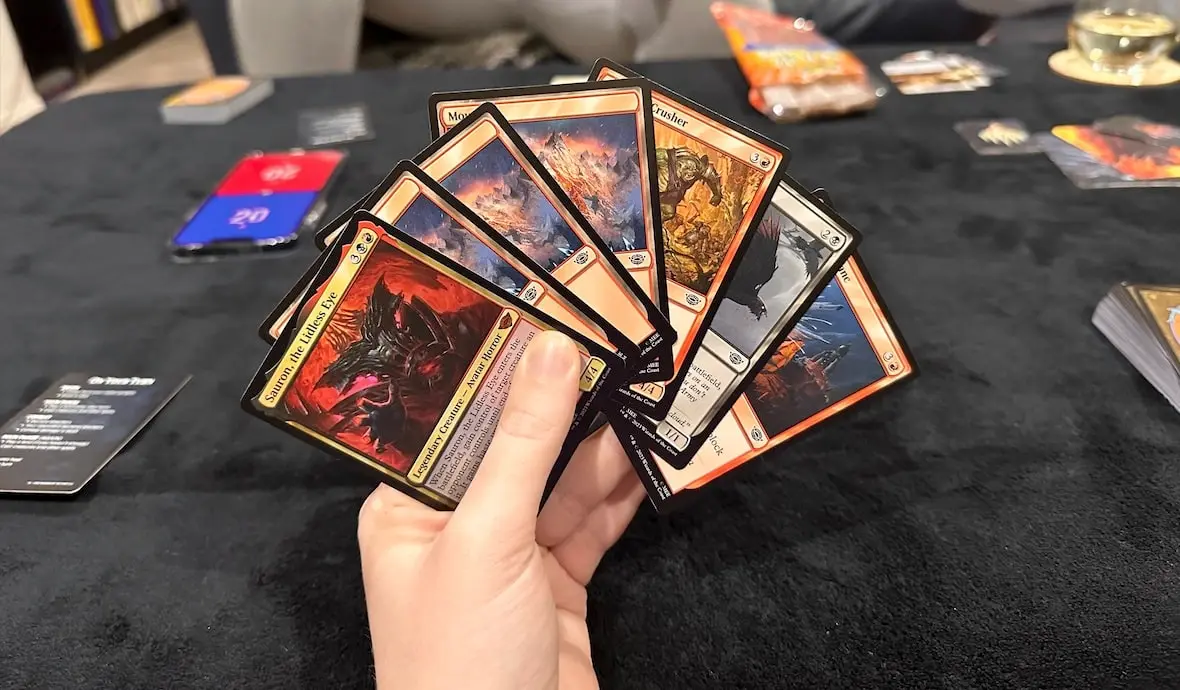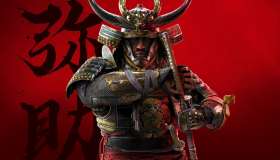The Lord of the Rings: Tales of Middle-earth is a phenomenal-looking card set. Magic: The Gathering has always prioritised sleek and fetching designs alongside robust, accessible gameplay mechanics – but it really feels like this Universes Beyond set is another step above for the long-running franchise. It’s not just that Land cards encompass sweeping sun-lit vistas and dark, lava-filled trenches, Wizards of the Coast has also added a sheen to every Lord of the Rings hero and villain.
Sauron, who heads up his own Commander Deck in this crossover, wears a flaming crown and gothic, angular robes that are the height of fashion. Arwen and Aragorn, who share position as leaders of the Shire-inspired Starter Deck, are beautiful – ethereal and regal.
While realistically, art is secondary to game mechanics, it’s worth remarking on. The work of each artist makes the entire set extremely desirable, and likely very attractive to a broader audience.
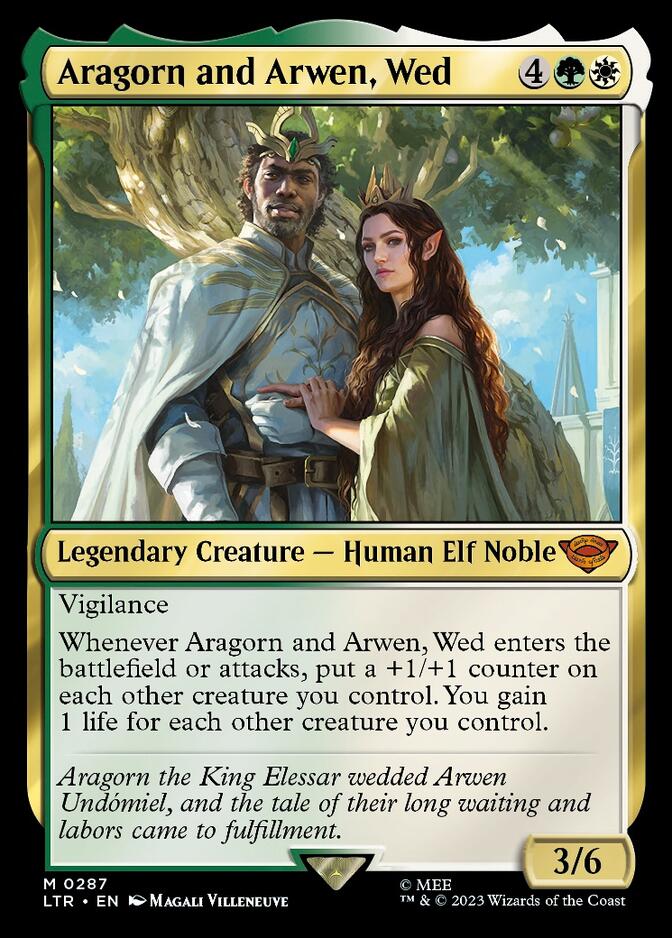
Those who enjoy The Lord of the Rings and its adjacent Tolkien properties will likely have eyes for this new set, even if they have no MTG experience. For those people, there is excellent news, because The Lord of the Rings: Tales of Middle-earth feels extremely accessible, even as a physical game rather than an MTG Arena add-on.
Flavour text
I mention MTG Arena specifically as it’s been my primary exposure to Magic: The Gathering since 2020, with multiple card sets shared and enjoyed over a glass of wine and a computer. It was during the pandemic era that I discovered MTG – in my role as a producer for Kotaku Australia, for full transparency – and I’d scarcely had an excuse to check out the physical version of MTG since. After all, Arena gives you everything you need to play the game digitally. It even tracks rules for you, puts counters where necessary, parses seemingly complex game mechanics, and prevents you from making illegal moves.
But The Lord of the Rings: Tales of Middle-earth immediately enthralled me, with its re-interpretation of Tolkien lore and its aforementioned artwork. Intimidated though I was, it was finally time to play a physical round of MTG – and after all this time, it turned out there was no need to fear. MTG is extremely easy to learn once you’ve got a grasp of the basic flow of gameplay, and the particulars of power symbols and action words which make up the ‘flavour text’ of each card.
The Lord of the Rings: Tales of Middle-earth Starter Kit was particularly good for a basic introduction – although a single round playing with MTG veterans was enough to understand exactly how to play, down to the minute detail. Expertise is slower to arrive but once you understand the basics, you’re off to the races.
A quick, beginner-facing rundown for the uninitiated: Magic: The Gathering is a card game that encompasses multiple playing styles – most of which include two or more players facing off against each other with a deck of cards.
The basic style of gameplay includes a 60-card deck balanced with power-giving ‘Land’ cards and other cards which may include Creatures, Enchantments, Sorcery, and other battlefield effects. In turns, players lay their cards on the table, beginning with Land cards, which enable the summoning of more powerful cards. Your goal is to whittle down the health of your opponents until they perish.
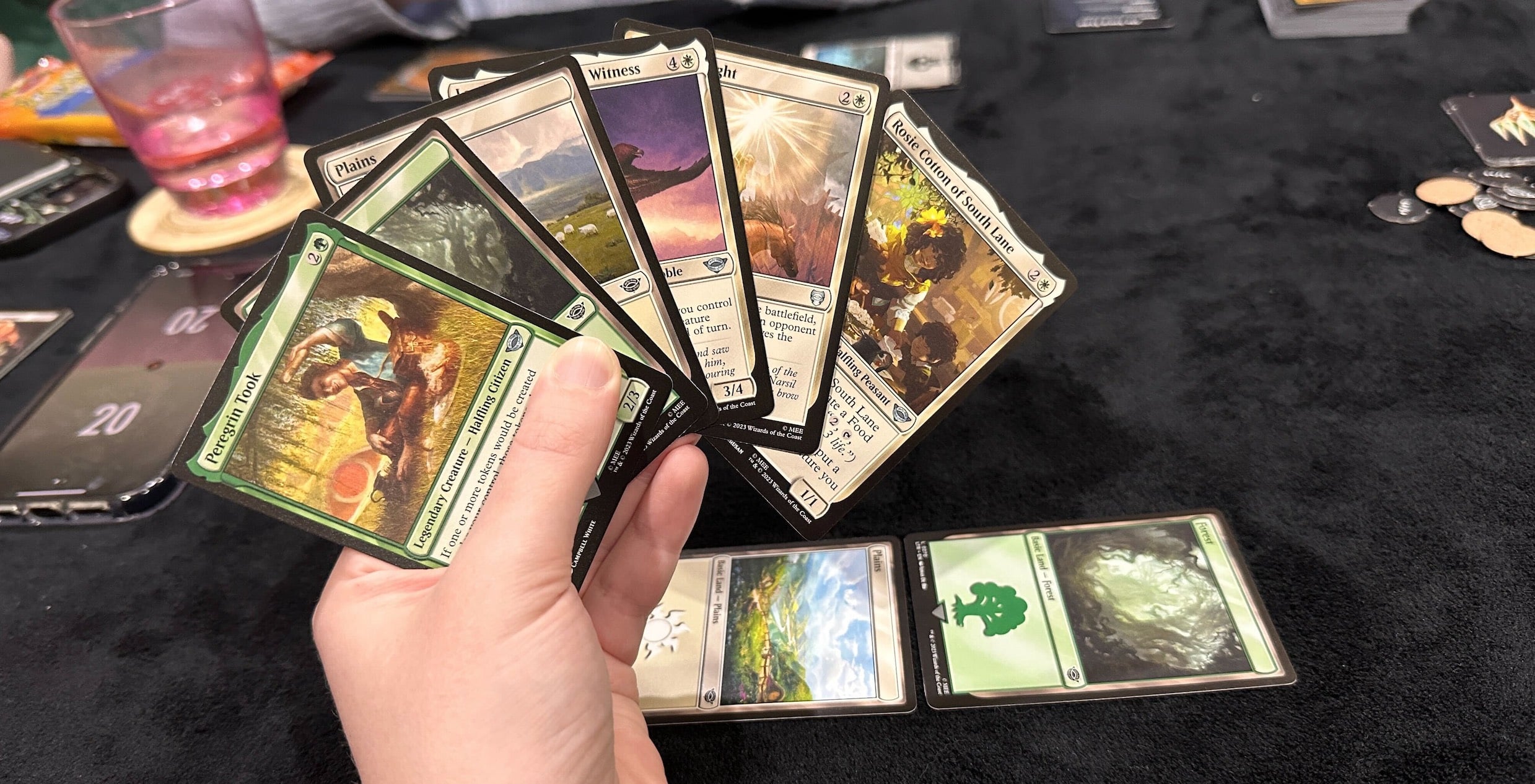
The other popular gameplay style is Commander, which comprises a 100-card Deck with no repeated cards, and very similar gameplay. You can create your own Commander Deck if you wish, or use a preconstructed deck such as Tales of Middle-earth‘s Hosts of Mordor Deck, headed up by Sauron.
Each attempts balance (which can be derailed by chance card draws, opponent attacks, and other factors) although they all play differently. In my time with the game, I played with and alongside a number of player decks, each with their own hidden quirks.
The Hosts of Mordor proved to be a worthy companion deck loaded with potential – and it very nearly won me a match of Commander against four other players, two of whom were veterans of the game.
Opening play
In my opening steps with The Lord of the Rings: Tales of Middle-earth, I was pitted against a fellow newbie using the aforementioned game Starter Kit (which is where I’d recommend fellow beginners invest their time). I took the Sauron Deck, they took Aragorn and Arwen, Wed. Immediately, both felt different, with unique MTG mechanics applied to each.
The Aragorn and Arwen Deck contains lighter, more beautiful Lands and a range of Hobbit Creatures with special abilities – most notably, the ability to generate food, which allowed my opponent to recoup lost health. It also contains a number of horse-bound heroes, each of whom have fast-acting attacks and a sturdy amount of health.
The Sauron starter deck, meanwhile, contains a range of dark creatures with powerful abilities – but each relies on Lands being played, slowing down the pace of attack and requiring various blocking strategies to stay alive long enough for a killer hit.
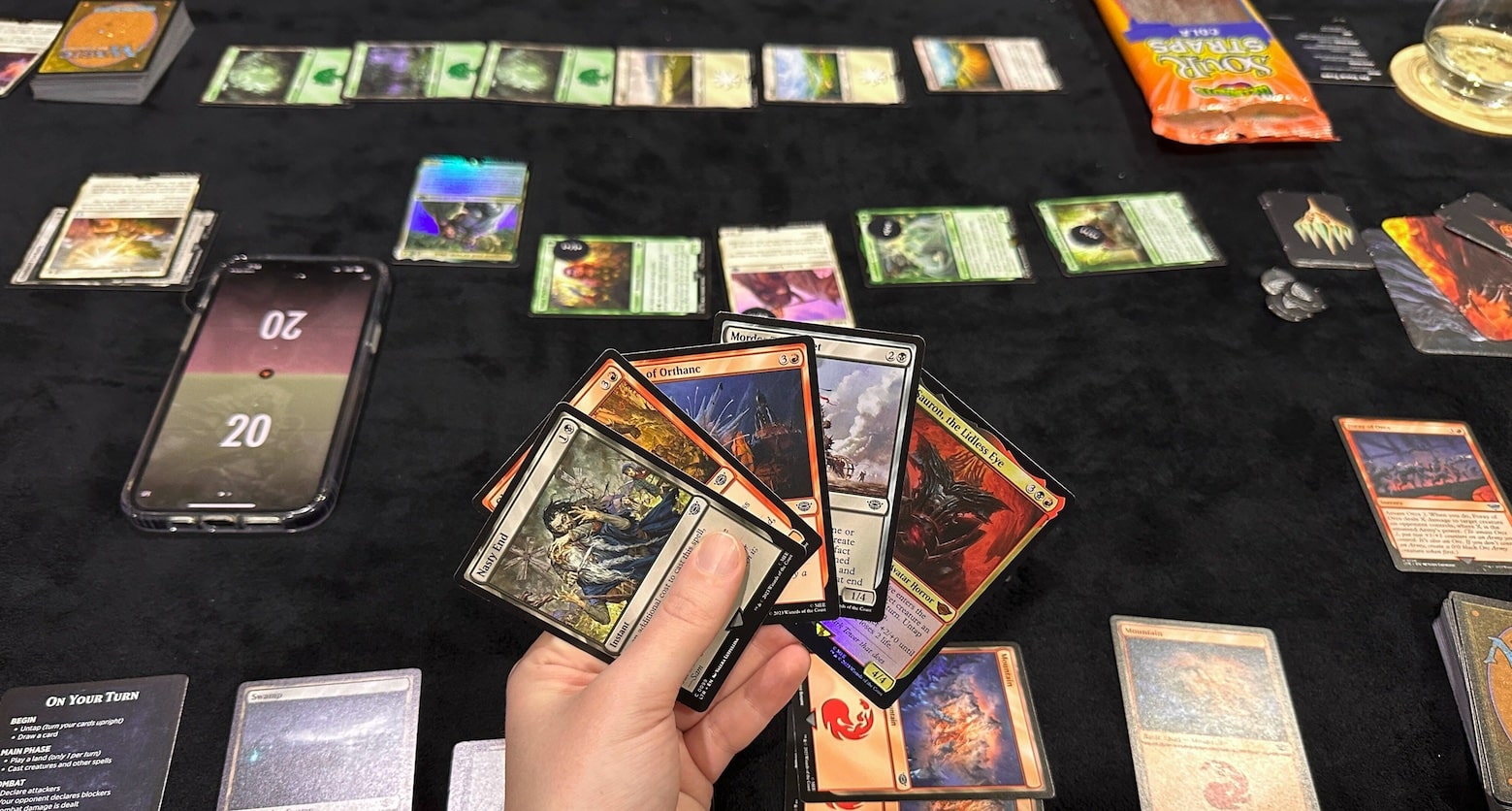
Chance played a massive part in my performance during these ‘beginner’ rounds. I drew only a few lands with my first hand, alongside powerful monsters that couldn’t yet be played. While I was building up power to deploy these attackers, my rival strengthened their Hobbit and Rohirrim army, and wound up killing me before I got a single hit in. That’s the danger in MTG – but also what makes it so fun.
The game is a level playing field, and you can win or lose by a combination of chance, skill, and a perfectly stacked deck.
One Commander to rule them all
My luck faired slightly better in a game of five-way Commander, where Sauron nearly cinched me victory before one player activated an ability that sent all my summoned creatures to the grave.
The Hosts of Mordor Commander Deck is extremely powerful, although it also requires patience to deploy correctly. This was clear, even as a newcomer. Sauron himself is the shining light of this deck. Once he’s summoned, you get to amass a five-strong Orc army, and mill five cards to the graveyard, then choose one creature card from that lot to play immediately on the battlefield, with no need to pay the Land cost.
To achieve this, you do need to wait patiently, as Sauron requires at least eight turns to deploy enough Land cards to be summoned. That said, I was able to survive long enough to achieve this – and if I can do it, most players will be in the same boat.
With luck, I managed to deploy Sauron, my orc army, and the high-powered Knollspine Dragon in a single turn – and then on the next round, I attacked a fellow player for 21 damage. I’ve bolded that, because I was pretty proud. Chuffed, in fact.
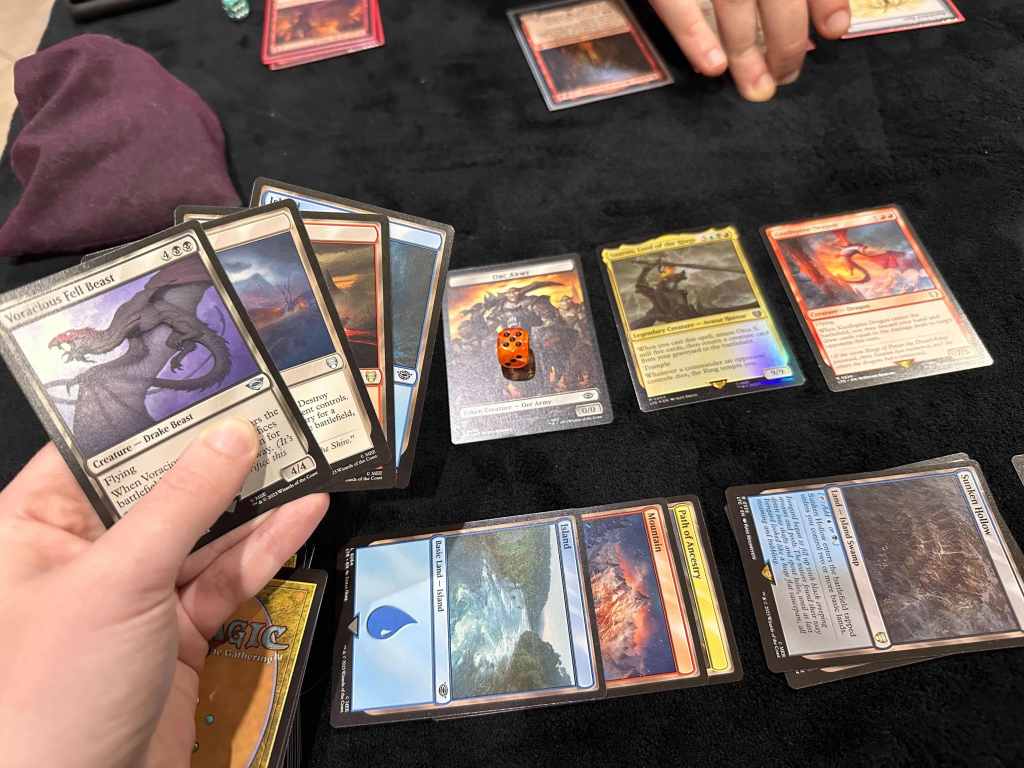
The next round, my luck seemed to turn again – because an opponent lost their Commander, meaning The Ring ‘tempted’ one of my Creatures. See, in Tales of Middle-earth, The One Ring operates as an additional force on the battlefield. Once The One Ring tempts a player, they gain a particular effect (becoming Legendary and unblockable, in the first stage) with this power growing with each new temptation.
The Creature tempted by The One Ring in my round was Sauron. So I eventually wound up with a 25-damage cohort of creatures, and Sauron equipped with The One Ring. Thematically, a fantastic but terrifying fit. Teaming up with an opponent, I was able to defeat one player and knock them out of the game in two rounds.
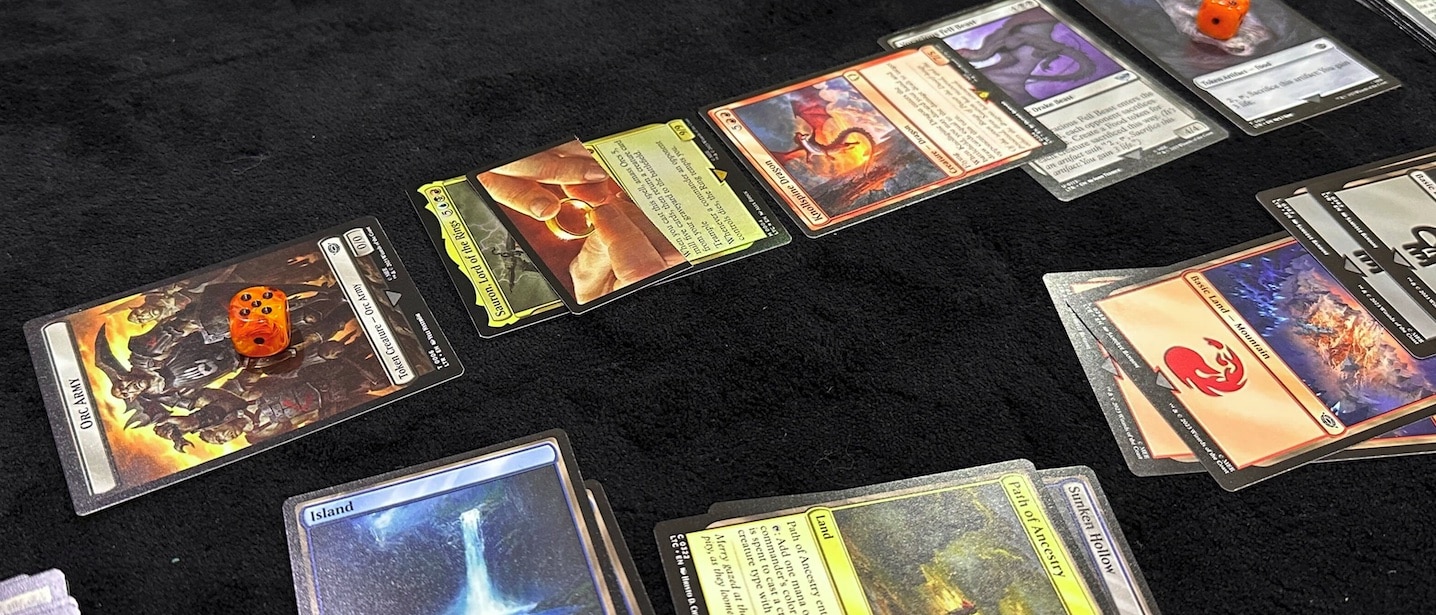
Then, of course, luck came into play – and another opponent drew an Enchantment that banished my entire battlefield into the graveyard, and I lost all competitive advantage in a single swoop.
But for one glorious moment, I finally understood the appeal of MTG. The power you feel when you’re lording it over your opponents. The sheer arrogance that can come from a brilliant hand.
A harrowing end
I lost, in the end – thanks to a veteran deck hiding a neat, repeatable summoning trick that basically decimated every Commander in a single round – but truly, in that moment, I felt invincible.
That, to me, was the crux of my MTG experience. There’s a rush with pulling each new card from your deck, whether it’s just another Land card or a Creature hiding a killer move. It’s hard to hide your smugness at times, and not to let the competitive voice in your head make you mean. But once you’ve gotten to grips with your flow, and understood exactly what each card placement means, a real sense of the drama overtakes your logical brain.
It becomes not enough to win a game of MTG. You need to trample your opponents to dust. Wield Sauron and your Orc Armies in a devastating victory. Maybe rub it in, just a little bit. The Lord of the Rings: Tales of Middle-earth is a gateway to this unruly behaviour – and as my first taste of physical MTG, it was an excellent starting point.
I can feel it already. This game will make a monster out of me.
The Lord of the Rings: Tales of Middle-earth is now available.
GamesHub has affiliate partnerships. These do not influence editorial content. GamesHub may earn a small percentage of commission for products purchased via affiliate links.
